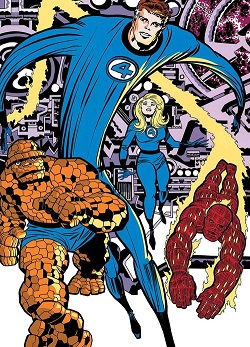
The Fantastic Four is a superhero team appearing in American comic books published by Marvel Comics. The team debuted in The Fantastic Four #1, helping usher in a new level of realism in the medium. It was the first superhero team created by artist/co-plotter Jack Kirby and editor/co-scripter Stan Lee, and through this title that the "Marvel method" style of production came into prominence.
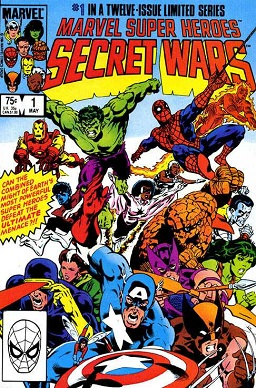
Marvel Super Heroes Secret Wars, commonly known as Secret Wars, is a 12-issue American comic book crossover limited series published from May 1984 to April 1985 by Marvel Comics. The series was written by Jim Shooter, with art by Mike Zeck and Bob Layton. It was tied in with a toy line and a role-playing game of the same name from Mattel.

The Red Skull is a supervillain appearing in American comic books published by Marvel Comics and its predecessor Timely Comics. In Captain America Comics #1, the Red Skull's secret identity was revealed to be George Maxon; It would be retroactively established that he was merely a decoy who was working for the real Red Skull. Albert Malik would later adopt the Red Skull mantle, only to be killed in a plot orchestrated by the original.

Namor is a character appearing in American comic books published by Marvel Comics. Created by writer-artist Bill Everett for comic book packager Funnies Inc., the character first appeared in Motion Picture Funnies Weekly #1 (uncirculated). Namor first appeared publicly in Marvel Comics #1. It was the first comic book from Timely Comics, the 1930s–1940s predecessor of Marvel Comics. During that period, known to historians and fans as the Golden Age of Comic Books, the Sub-Mariner was one of Timely's top three characters, along with Captain America and the original Human Torch. Moreover, Namor has also been described as the first comic book antihero.
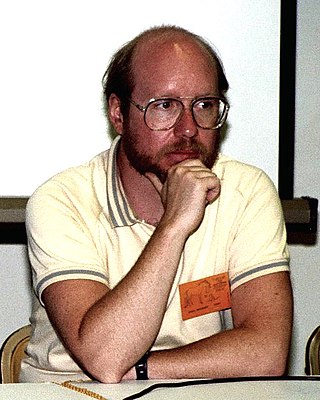
Steve Englehart is an American writer of comic books and novels. He is best known for his work at Marvel Comics and DC Comics in the 1970s and 1980s. His pseudonyms have included John Harkness and Cliff Garnett.
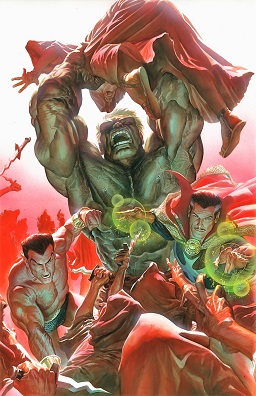
The Defenders are a set of superhero groups with rotating membership appearing in American comic books published by Marvel Comics. They are usually presented as a "non-team" of individualistic "outsiders" who, in their prior adventures, are known for following their own agendas. The team often battle mystic and supernatural threats.
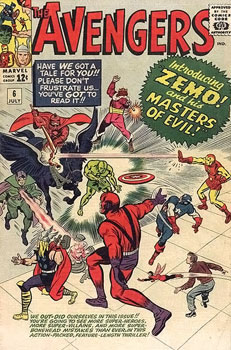
The Masters of Evil is a supervillain team appearing in American comic books published by Marvel Comics. The first version of the team appeared in The Avengers #6, with the lineup continually changing over the years.

Georges Batroc the Leaper is a fictional character appearing in American comic books published by Marvel Comics. Created by writer Stan Lee and artist Jack Kirby, the character first appeared in Tales of Suspense #75, 1966. He is a mercenary and a master of the French form of kick-boxing known as savate, commonly depicted as an adversary of Captain America, and a mentor of Gwen Poole. Batroc's name derives from the word batrachia, a classification of amphibians that includes frogs, which also plays on the stereotype of calling French people frogs.
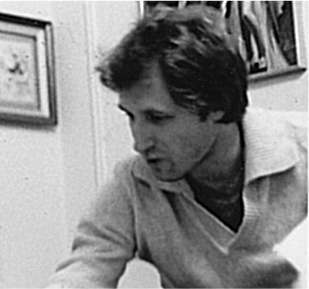
William Marshall Rogers III, known professionally as Marshall Rogers, was an American comics artist best known for his work at Marvel and DC Comics in the 1970s.

Tiger Shark is a fictional character, a supervillain appearing in American comic books published by Marvel Comics. He is usually depicted as an enemy of Namor.
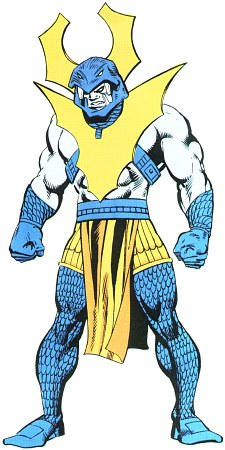
Attuma is a supervillain appearing in American comic books published by Marvel Comics. He is an Atlantean nomadic warlord who is usually depicted as an enemy of Namor the Sub-Mariner, and is the father of the superhero Andromeda. He believes he is the prophesied conqueror of the Atlantean Empire.

Justice is a twelve-issue American comic book limited series published bimonthly by DC Comics from August 2005 through June 2007, written by Alex Ross and Jim Krueger, with art also by Ross and Doug Braithwaite. Its story involves the superhero team known as the Justice League of America confronting the supervillain team the Legion of Doom after every supervillain is motivated by a shared dream that seems to be a vision of the planet's destruction, which they intend to avoid.

"Acts of Vengeance" is a comic book crossover storyline that ran through several titles published by Marvel Comics from December 1989 to February 1990.

Titania is a character appearing in American comic books published by Marvel Comics. Created by then-Editor-in-Chief Jim Shooter and Mike Zeck, the character first appeared in Secret Wars #3. Mary MacPherran is the second incarnation of Titania. She is the rival of the superhero She-Hulk. Originally a supervillain, in later years, she has reformed into more of an antihero. The character has also been a member of the Masters of Evil and the Frightful Four at various points in her history.

The Melter is the name of three fictional characters appearing in American comic books published by Marvel Comics. The original Melter, Bruno Horgan, first appeared in Tales of Suspense #47.
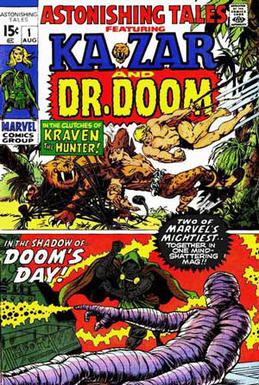
Astonishing Tales is an American anthology comic book series originally published by Marvel Comics from 1970 to 1976. Its sister publication was Amazing Adventures.
Atlantis is a fictional location appearing in American comic books published by Marvel Comics. It is based on the mythical island of Atlantis first mentioned in Plato's initial dialogue the Timaeus, written c. 360 BC. In the Marvel Universe, Atlantis was a small continent with many human settlements. Over 21,000 years ago, an event called the "Great Cataclysm" caused it to be submerged into the sea.
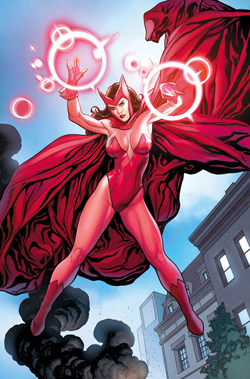
Scarlet Witch is a character appearing in American comic books published by Marvel Comics. Created by writer Stan Lee and artist Jack Kirby, the character first appeared in The X-Men #4 in the Silver Age of Comic Books. Originally said to have the ability to alter probability, the Scarlet Witch has been depicted as a powerful sorceress since the 1980s and on occasion has become powerful enough to alter reality by tapping into greater energy sources.

MODOK is a fictional character appearing in American comic books published by Marvel Comics. Created by Stan Lee and Jack Kirby, the character first appeared in Tales of Suspense #93. The first MODOK is George Tarleton, a former employee of Advanced Idea Mechanics (A.I.M.), an arms-dealing organization specializing in futuristic weaponry, who undergoes substantial mutagenic medical experimentation originally designed to increase his intelligence. While successful, the experiments result in him developing a freakishly overdeveloped head and a stunted body, causing the character's signature look and use of a hoverchair for mobility. After the experiments, he kills his creators and takes control of A.I.M. Following Tarleton being changed back to normal, a new independent being created afterward dubs himself MODOK Superior, becoming the enemy of Gwenpool.

The Vision and the Scarlet Witch is a series of comic books published by Marvel Comics. The primary characters of these comics star the Vision and Scarlet Witch, known as a couple and are two longtime members of the Avengers.


















